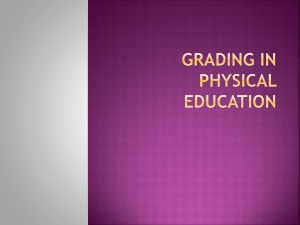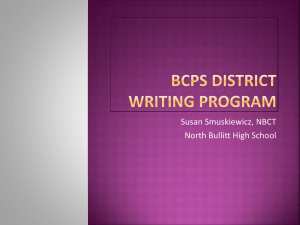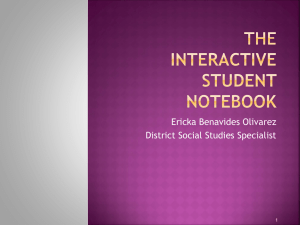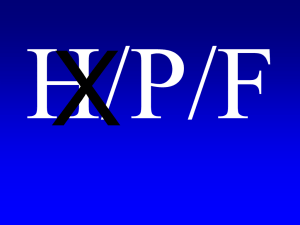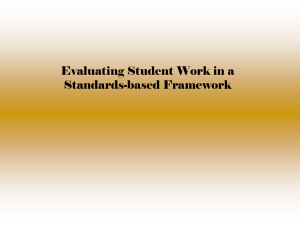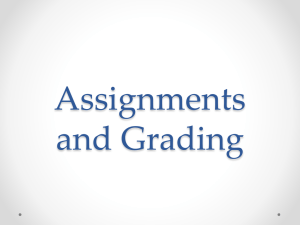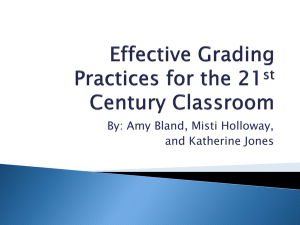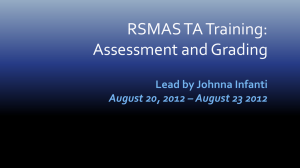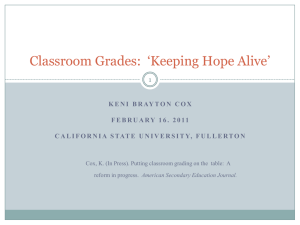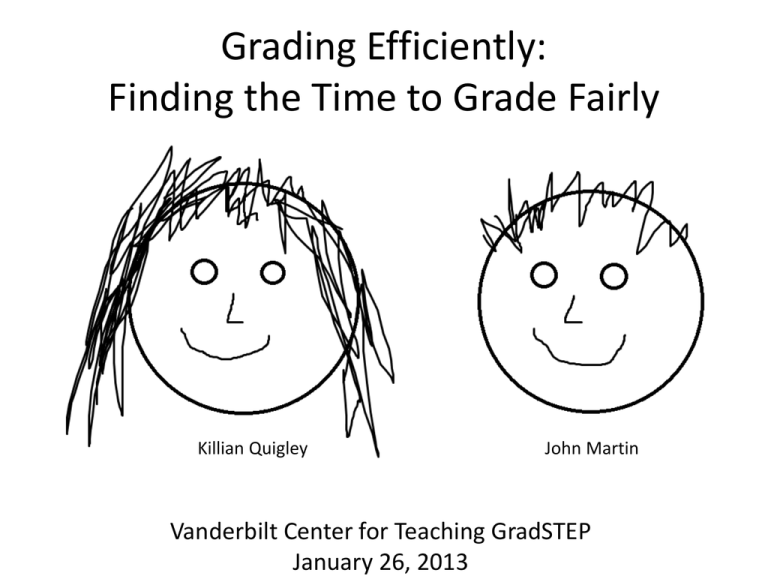
Grading Efficiently:
Finding the Time to Grade Fairly
Killian Quigley
John Martin
Vanderbilt Center for Teaching GradSTEP
January 26, 2013
Challenges
The “What” and “Why” of
Grading
Time Management
Rubrics
“Subjective” Grading (?)
STEM Disciplines
Group Work and Projects
Discussion/Brainstorming
Why Talk About Grading?
Why Are We Here?
Let’s take a step back….
Why do we grade in the first
place?
Goal #1: Accuracy
Goal #2: Consistency
Goal #3: Student Learning
Time Management
grading
≠
procrastination
grading
=
deliberate act
Establish
priorities
Befriend
the clock
Set
boundaries
Schedule
Establish a Space and a Ritual for Grading
reflect on how things go!
Using Rubrics
Kinds of Rubrics
• Rubrics given to students with your
expectations for how they complete their
assignments
– Stylistic, less detailed
• Rubrics for yourself on how you grade these
assignments
– “Answer keys”
• Using both these will save you time and effort!
Why do we use grading
rubrics?
1) Keeps grading fair and consistent
2) Directly aligns grades with learning goals
3) Saving time – less thinking in giving
credit
Grading rubrics are applicable to all
disciplines!
Grading Outside the Rubric
• Assignments without a
set rubric or unexpected
student responses
• One way to deal with
these situations: real-time
rubric making
• Record your grading as
you go – apply the same
standards to all students
Some rights reserved by ericmay
Killian’s section on humanities
assignments
• Clarification, consistency
Rubric • Reference
• Handbooks
Other • VWS, CFT, Online Pedagogy Guides
voices
Trial
Face
time
• Examples
• Drafts and partial assignments
• Peer review
• Conferences and office hours
Technologies
• Speed
• Clarity
• Archive-building
Myth:
“Students’ writing will
improve in direct
proportion to the
amount of time their
teachers spend on
their papers.”
(Hairston 2002)
Instead:
Maxine Hairston
“…all the drudgery and
sacrifice on the part of
writing teachers might be
justified if it helped
students to learn to write;
unfortunately, we have no
evidence that it does.”
(Hairston 2002)
• Don’t grade “with error at the front of our minds”
• Never assess an assignment without having first
read/watched it once.
• What is the student attempting to do?
• How can we tailor our feedback to help our
students achieve their unique goals?
• Note the things a student has done well, and
suggest a small number of major changes.
• Avoid creating “cognitive overload”
(Hairston 2002)
• Specific comments
• Students will not take heed of
generalities, like “Pay attention to
your reader”
(Nancy Sommers 1999)
• Solving problems, not discussing broad
conceptual issues.
• Focus on only a few things.
• Suggest concrete strategies for
improvement – reverse outlines, concept
maps, etc.
(Mark Gelly 2002)
STEM Discipline Assignments
Problem Sets & Short Answer
Responses
• Pros:
– Systematic problems = systematic answers
– Usually come with well laid-out grading rubrics
and answer keys
– Broken up into digestible segments
• Cons
– Backtracking to find mistakes
How to Handle Problem Sets & Short
Answer
• Grade horizontally
– Easier to pick out trends in answers
• Real-time rubric
– Record what you take off/give points for so you
can apply across the board
• Broadly respond to common errors
• Use “minimal marking” while grading for common errors
• Emphasize point in teaching exercise or send an email to
the class to explain
Lab Reports
• Pros:
– Usually have big emphasis
on stylistic elements – easy
to spot
– Established rubric by
professor overseeing lab
– Lots of other graders
• Cons:
– Can be dense
– Lots of other graders
– Factoring in-class effort and
performance
Handling Lab Reports
• Make sure students know format before
making their first report
• Draw from past TA’s experiences in grading
and doing the actual labs
• Skim reports before grading horizontally
– Reports are segmented but flow is also important
• Don’t waste time fixing every stylistic mistake,
send out message to the entire class about
persistent issues
Group Work/Projects
• Pros:
– Multiple people working
= less gradable stuff
– Teaches alternative
lessons outside normal
curriculum
• Cons:
– Grading multiple people
for one assignment
Handling Group Work/Projects
• Accentuate main group assignment/project
with individual assignments
• Make individual members responsible for
drafts of sections
• Give feedback chances for group members
• Grin and bear it....
Why are you here?
What is your experience?
What else might we discuss?
THANK YOU!
CFT:
• Certificate in College Teaching
• SoTL Scholars Program
• Small Group Analysis
• Teaching Observations
• Technology Consultation
• Conversations on Teaching
• MUCH MORE!
http://cft.vanderbilt.edu
Picture Credits
• http://www.optionetics.com/market/articles/2001/07/24/technicaltoolbox-assessing-market-extremes-using-bollinger-bands
• http://kellylakecmp.files.wordpress.com/2007/11/grading.gif?w=500
• http://www.psmag.com/blogs/when-grading-papers-red-ink-may-meanlower-scores-15809/
• http://en.wikipedia.org/wiki/File:Curveball_topspin.svg
• http://syosseths.com/z/math.html
• http://www.bodrum-hotels.com/math-problems/math-problems-fortenth-grade.html
• http://shop.atozteacherstuff.com/downloads/scientific-method-labreport-booklet-use-w-any-experiment.html
• http://laisogata.wordpress.com/
• http://www.samstoybox.com/toys/FrustrationBall.html
• http://www.ideachampions.com/weblogs/archives/2011/06/post_3.shtml

